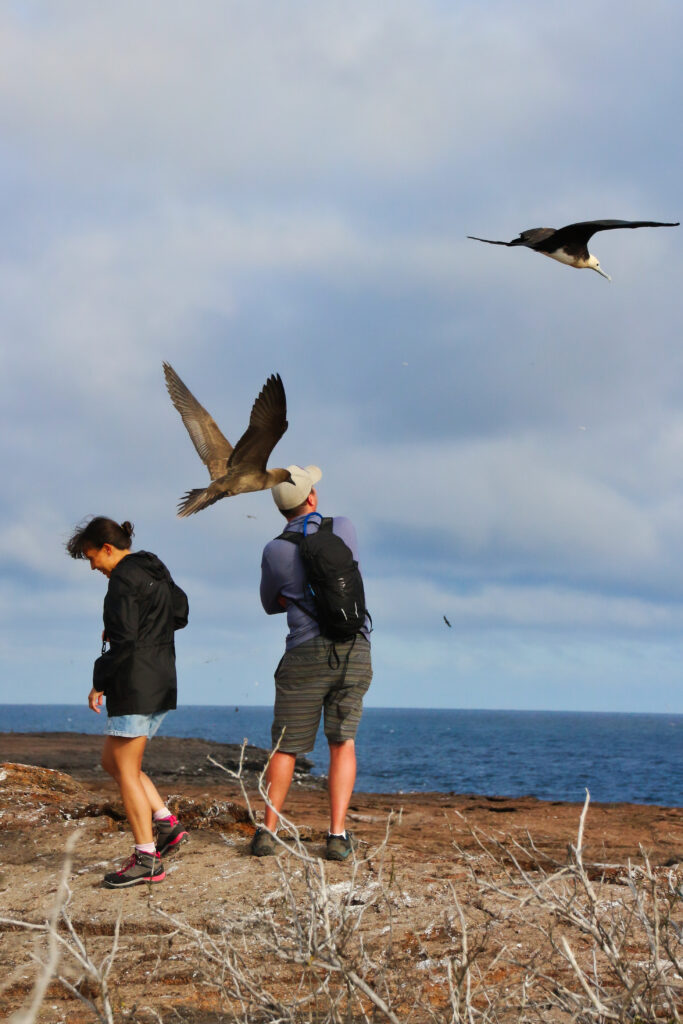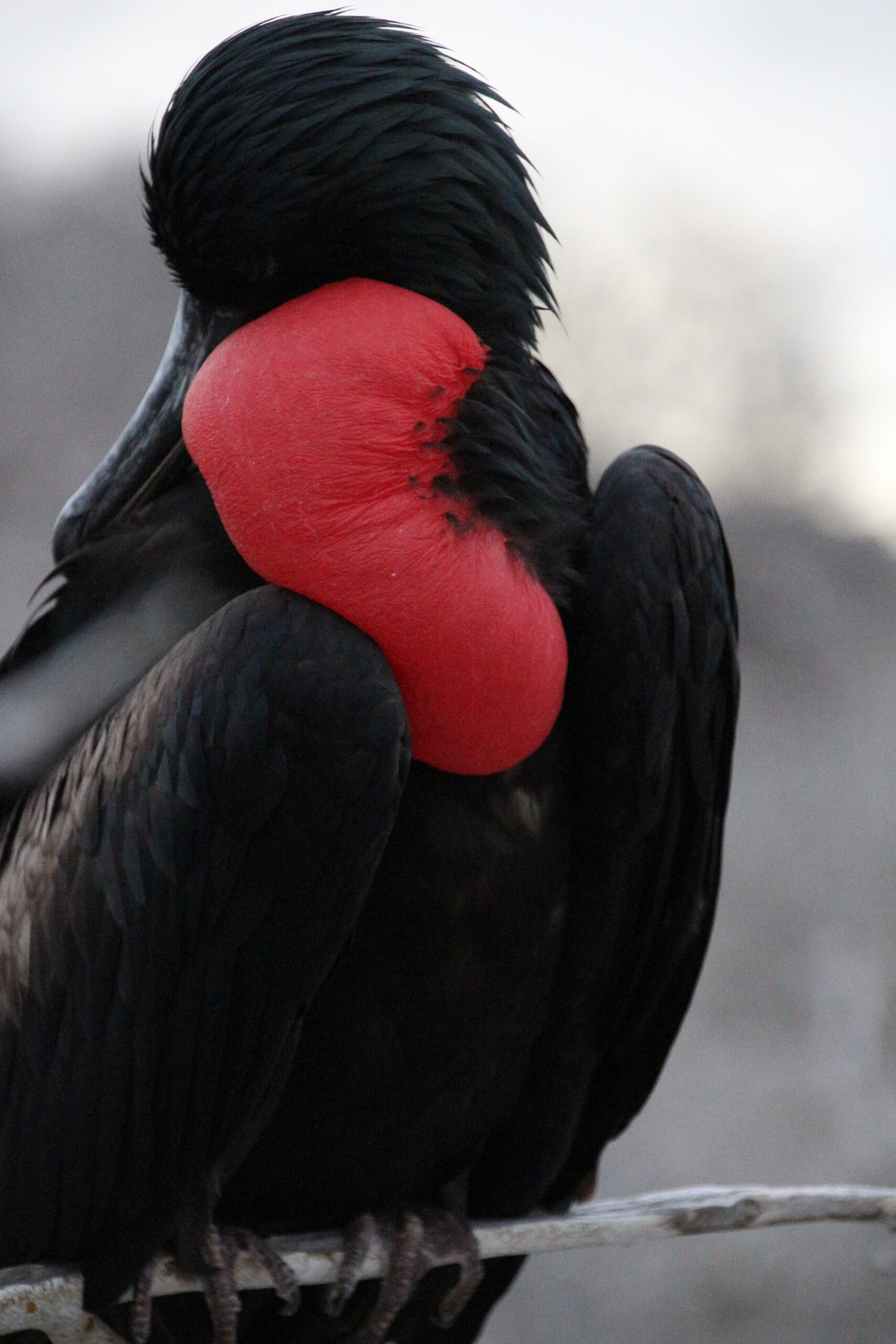…. Gekotzt hat keiner, aber irgendjemand machte den ersten Ausflug nicht mit. Die Nacht war hart, es war sehr wellig und geschlafen hat kaum jemand. Stefan stand drei Stunden am Fenster, Katharina hat zumindest ein wenig geschlafen, aber das war nur in einer einzigen Position möglich. Den anderen der Truppe ging es ähnlich, alle kamen etwas zerstört zum Frühstück. Umso enttäuschter waren wir nach der Aussage, dass die Intensität gar nicht so stark war, vielleicht eine 3 auf einer Skala von 10.
Stefan blieb im Bett, der Rest ging an Bord des Dinghis und nach einer Nasslandung am Korallenstrand spazierten wir an der Küste der Isla Genovesa entlang. Wir sahen wir vorgesehen erneut Seelöwen, dann die Red footed boobies und nazca boobies, Mangroven, Galapagos Tauben, Darwin Finches, und swallow tailed gulls und einen einzelnen Iguana, einen Nano (oder so ähnlcih, da er klein ist). Nach einer kurzen Stärkung ging es weiter zum Schnorcheln an der gegenüberliegenden Seite der Darwin Bay, dort sahen wir Seebären und viele bunte Fische.
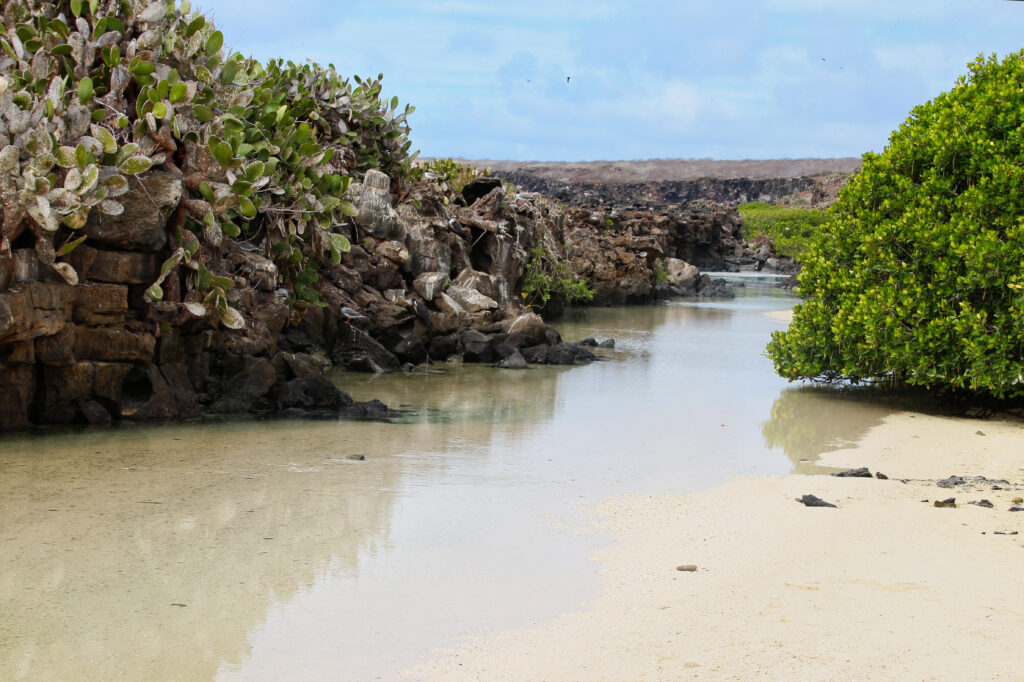
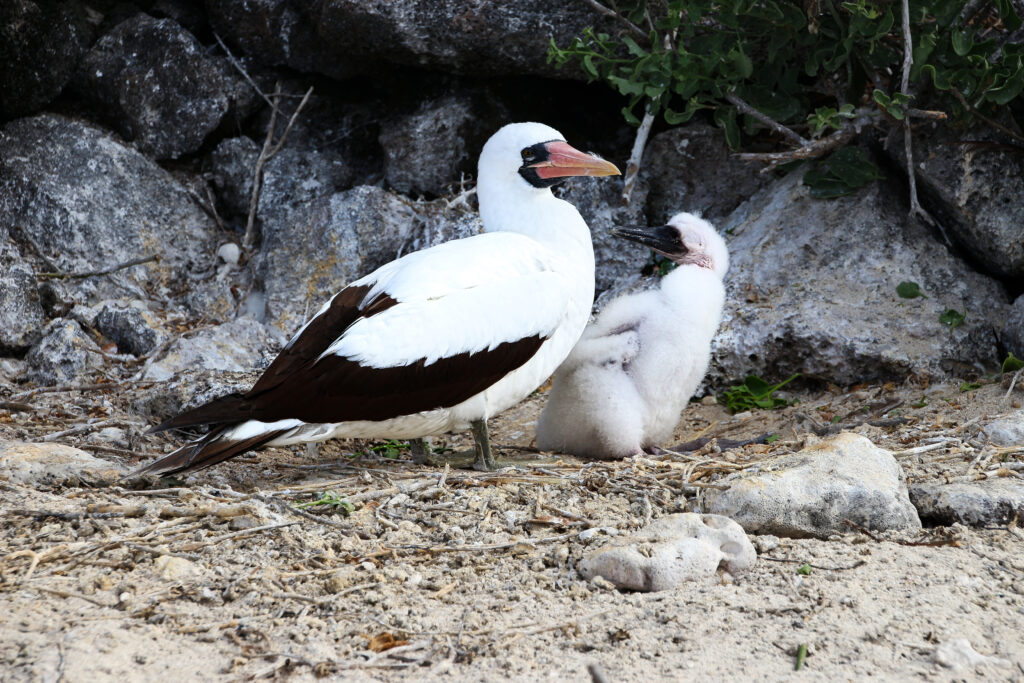
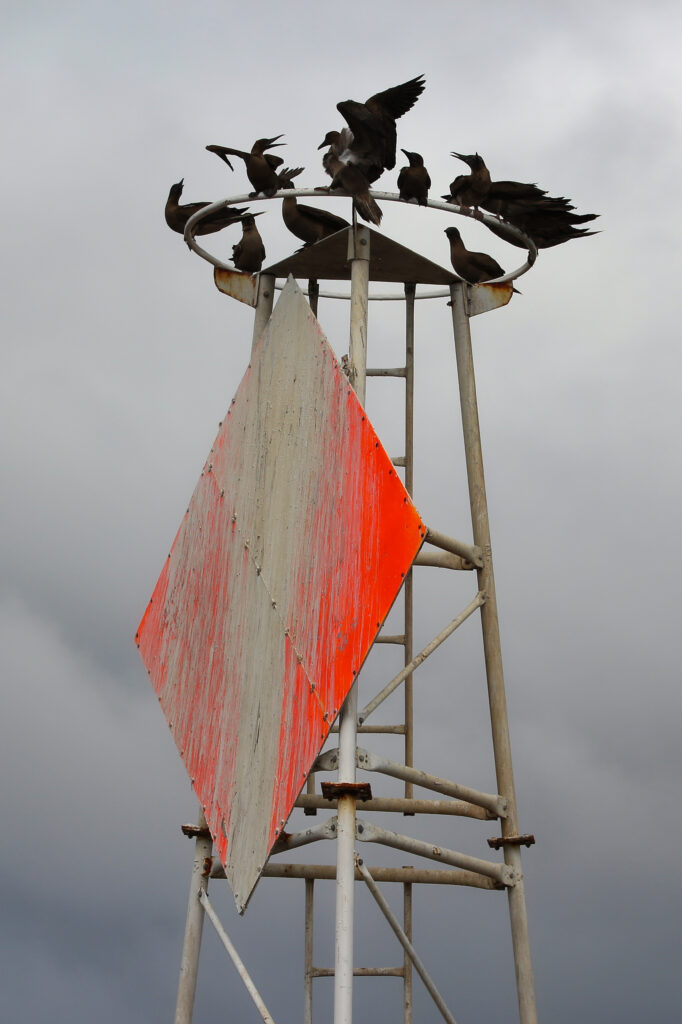
Alle Bilder
Nach dem Mittagsessen und einer kleinen Pause, machten wir die nächste Wanderung, über die Prince Phillips Steps auf die Klippe der Insel. GEnovesa ist eine Vogelinsel, so sahen wir wie am Vormittag ähnliche Exemplare, bizarre Landschaft mit grauen kahlen Bäumen, Trockenzeit. Nur die Eule haben wir nicht gesehen.
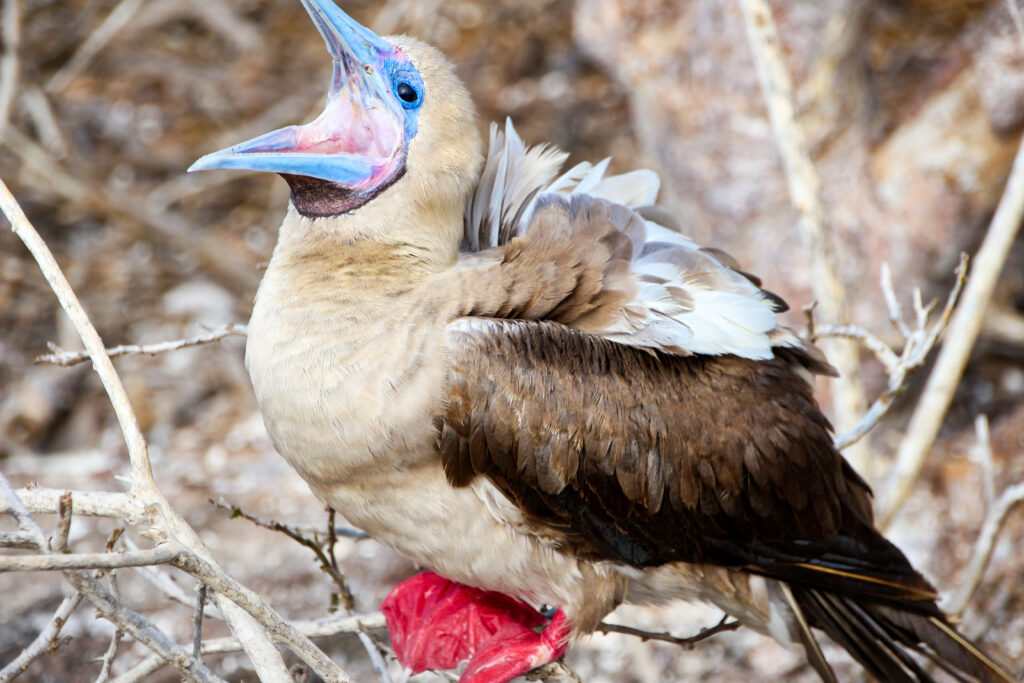
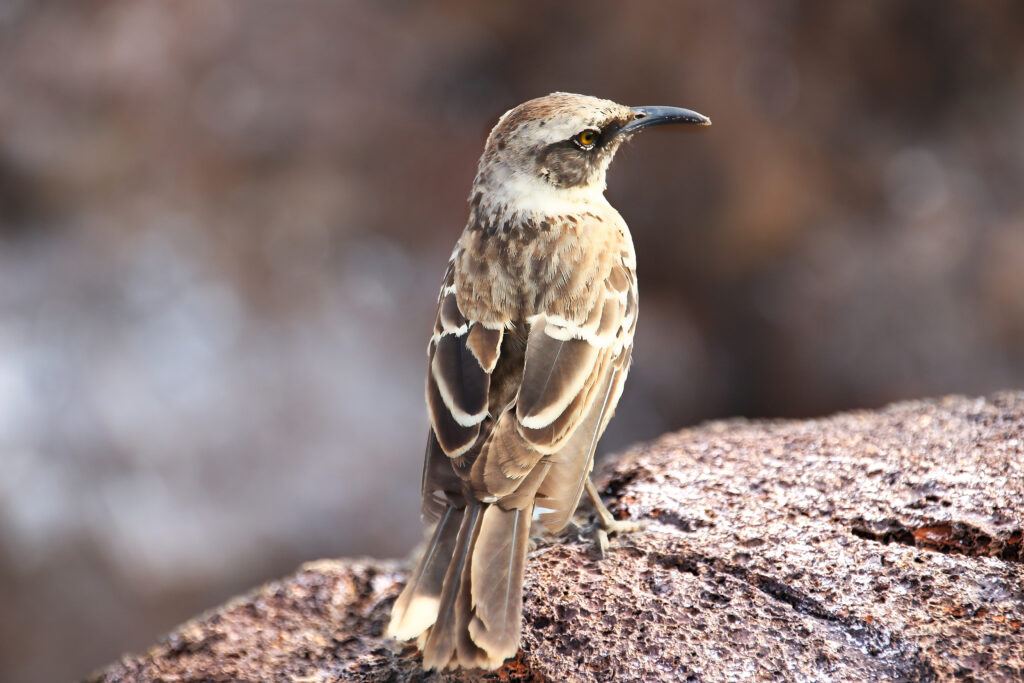
Alle Bilder
Am Abend wurden wir auf einen erneuten harten Ritt eingestimmt, halleuja. Als wir ins Bett gehen, wackelt es schon ganz schön und die Gardinenstange fällt ab, Zeit genug, dass Stefan noch ein paar Fotos bearbeiten kann.
Wie die Reiseunterlagen uns vorbereiten
A highlight of any visit to the Galapagos, a truly beautiful island thanks to the richness of its birdlife. Located in the northeast portion of Galapagos, the island is an outpost for many seabirds (as is Española in the South). Interestingly there are no land reptiles here and only very small Marine Iguanas, due to direction of ocean currents which apparently would not have carried terrestrial animals here. You will visit the following sites.
Genovesa – Darwin Bay
This bay is actually the caldera of an extinct, partially eroded volcano, with the surrounding cliffs forming the inner portion of the rim. You will land on a coral beach, and will immediately be struck by the amount of birdlife. The trail is loaded with
Great Frigatebirds (mating season from February to May),
Red-footed Boobies nesting in the mangroves,
Swallow-tailed Gulls,
Lava Gulls,
Yellow-crowned Night Herons.
Your trail takes you past a beautiful tide pool area, where herons try to catch small fish.
Activities:
Hike (0.9 mi / 1 ½ km),
snorkelling & dinghy ride Difficulty: Easy/moderate Type of Landing: Wet landing.
Highlights:
Nazca Boobies,
Red- footed Boobies,
Great Frigatebirds,
Swallow-tailed Gulls,
mangroves,
coral pebbles beach.
Snorkelling: rays, colourful reef fish.
El Barranco or Prince Philip’s Steps.
The tour begins with a great dinghy ride along the base of the cliffs where you see Redbilled Tropicbirds trying to make a precise landing in their nest. Squadrons of Frigatebirds are seen flying back and forth, whilst Red-footed Boobies perch on branches of Palo Santo trees which seemingly grow out of the cliffs. Once you arrive on land and climb to the cliff-top, you enter an area where nesting Nazca Boobies and Great Frigatebirds are found.
It is also a great place to see
Galapagos Doves
and Vampire Finches (Sharp-beaked Ground Finches) …ask your guide for the full story on the name! You will also see a large
colony of Storm Petrels which attracts Short-eared Owls, often observed stalking at these small sea birds, even during the day.













